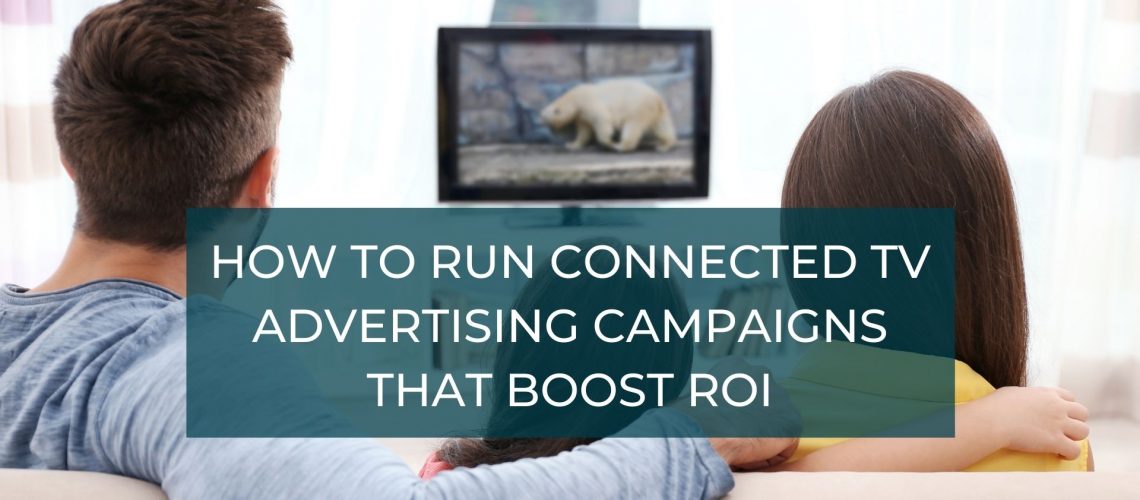Last year, 35.5 million US households or 27.3% of the population stopped watching cable TV. In 2022, 6.6 million more households are expected to cancel their pay TV subscriptions. But this doesn’t mean that people have stopped watching TV; they’re just watching a new kind of TV.
In this digital-first era, it’s no surprise that people’s TV watching habits have also relocated online. In 2021, 127.7 million Americans streamed ad-supported video-on-demand (AVOD) online and 4.2 million new AVOD viewers emerged this year. By 2026, Insider Intelligence estimates that 73% of the US population will revert to over the top (OTT) online video streaming due to lower costs, fewer commercials, and more viewing choices.
This is a wake-up call for advertisers around the world. Those who are still investing big dollars into cable TV advertising are bound to see some drains in their pockets as more audiences cut the cord. The alternative is to go where the customers are, and inadvertently a new form of advertising emerged – connected TV advertising.
In this guide, we discuss:
- • What connected TV advertising is
- • Whether CTV advertising is right for your brand
- • How CTV advertising works
- • How to run a successful CTV campaign that engages your target audience and generates high return on investment
What is connected TV advertising?
Connected TV advertising is a form of TV advertising where ad creatives are shown before, during, or after online content broadcasted on connected TVs. Connected TVs are those that you connect to the internet and broadcast any kind of online content. Examples include smart TVs like Roku TV, external devices like Chromecast, and game consoles. Learn more about connected TVs here.
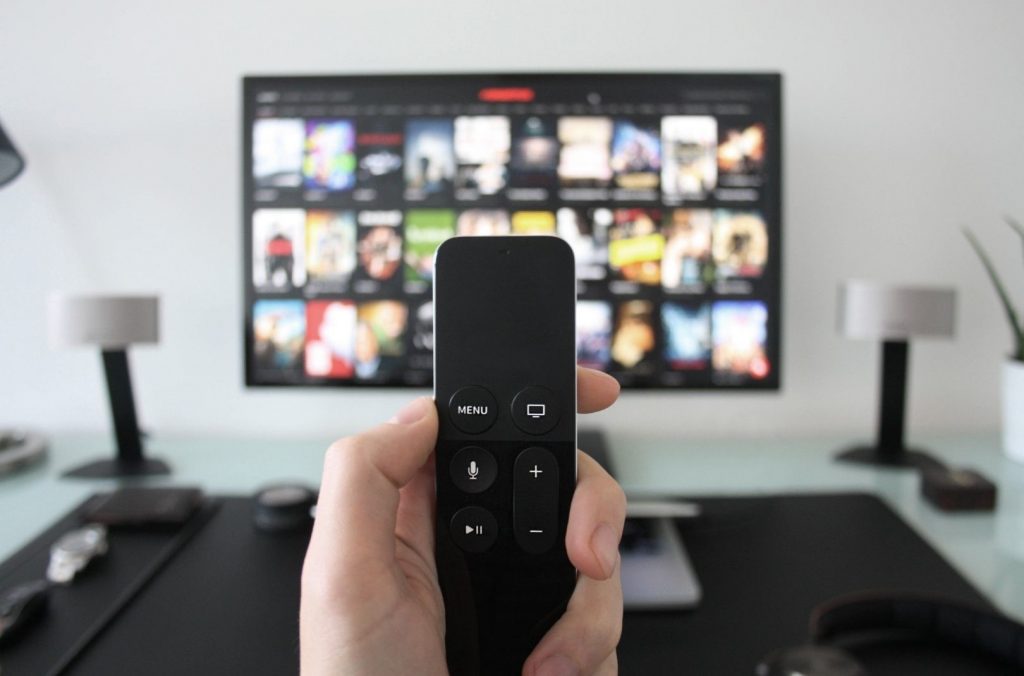
Advertisers are reallocating their budgets towards connected TVs to reach their target audiences. In 2021, marketers across the globe spent $14.4 billion on CTV advertising, and this ad spend is expected to catapult to $29.5 billion in 2024.
A recent survey by TradeDesk further uncovered how marketers feel about CTV advertising. 89% think connected TV is more effective than, or just as effective as, linear TV advertising. 43% identified CTV as the number one advertising channel for elevating brand awareness through storytelling techniques, even surpassing social media.
Despite this confidence, reallocating your advertising budget to connected TV is a big and long-term investment. Before you make the switch, consider the factors in the next section to ensure that you can get the best returns out of this investment.
Convinced that advertising on CTV is right for you already? Book a data strategy session with us to get the audience data you need to boost ROAS of your campaigns.
Is CTV advertising right for you?
Consider the three factors below to determine if you should advertise on connected TVs:
The age group of your target audience
If your target customers are younger audiences, connected TV advertising can generate higher returns on investment. Younger generations, Gen Z and Millennials, are more likely to use CTV than older generations. In fact, more than 80% of people aged 25 to 54 are CTV users. Most cord-cutters are also younger viewers. In 2021, 66% of the total number of cord-cutters were people aged 18 to 54.
The type of brand
If you’re a direct-to-consumer marketer, research has indicated that CTV ads can drive sales to your brand and elevate brand awareness. 85% of DTC shoppers watch streamed content every week and 82% of them take action after seeing an ad for a DTC brand on CTV, according to Telaria and Hulu in 2019.
Even if it isn’t specifically CTV, be sure to have at least some form of TV advertising campaign in your marketing mix since a six-month absence from TV advertising could reduce brand awareness by 39%.
Reach vs engagement
If you want to reach more viewers, consider over-the-top (OTT) advertising over CTV. OTT content is any online video that is streamed on mobile phones, laptops, and connected TVs. This translates into a wider reach as you can capture both mobile device users and connected TV users.
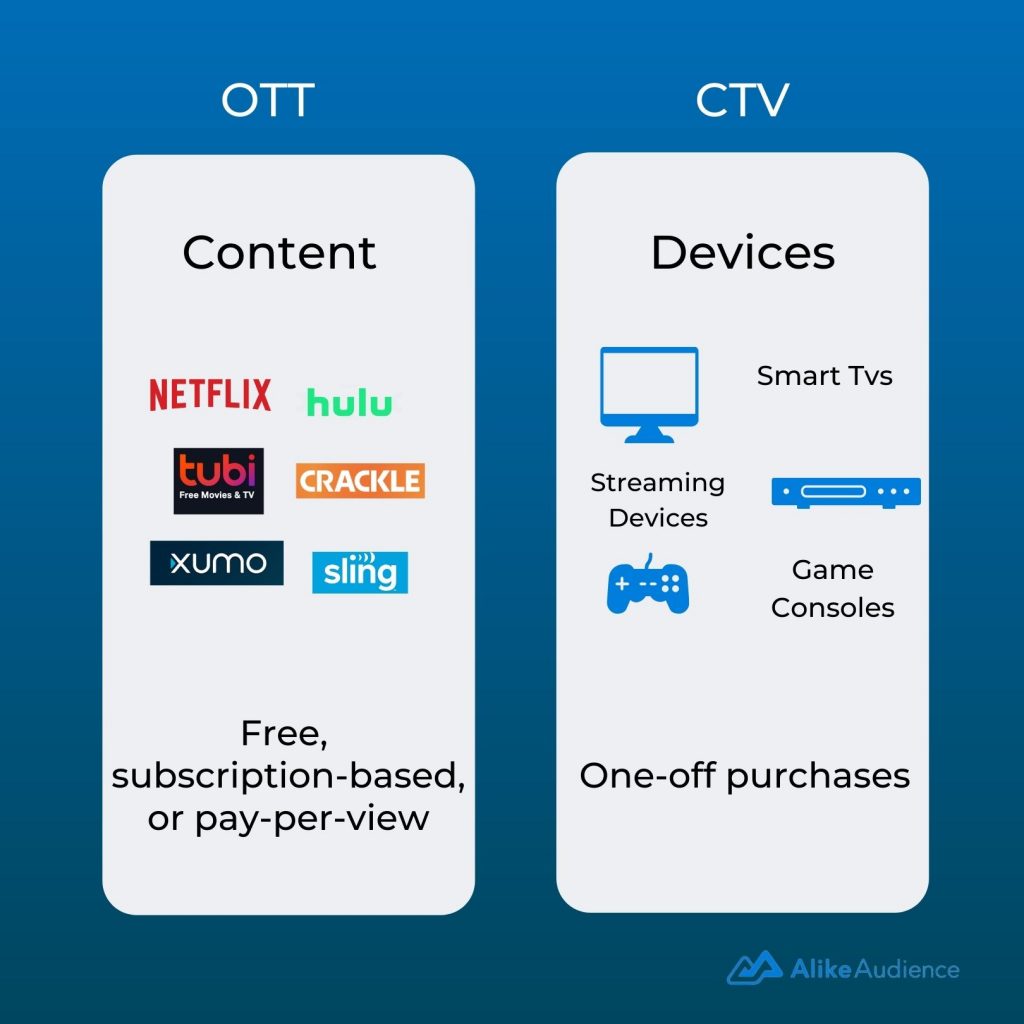
If your goal is to boost ad engagement and conversion rates, look towards CTV advertising. Audiences watch connected TVs in the living room where they can give undivided attention to the content. This means they can actually hear and engage with your CTV ads and remember your call to actions. In fact, in 2020, interactive CTV ads resulted in a 85% video-completion rate and a 309% lift in ad engagement.
Once you’ve determined that CTV advertising is right for you, let’s find out how it works.
How does CTV advertising work?
Connected TV advertising works on an auction system in a programmatic private marketplace (PMP). As an advertiser, you decide your ad budget, your target audience, and the platforms that you want to advertise on. But the difference between CTV and other cost-per-click (CPC) advertising campaigns is that the ad publisher for CTV (e.g. Hulu or Netflix) dictates who gets to advertise on their platforms and has access to their ad inventory.

CTV advertisements are also addressable–depending on the data of what each household/person prefers, you can change the CTV advertisement that you show to them. Here’s an example of how this works:
Say you’re an advertiser for an automotive brand that sells three types of cars: an electric car, an SUV, and a sports car. You create three different types of ads; one for each car. Then, you collect data of your target audiences and group them into different personas: the environmental conscious, the large family, and the rich bachelor. Based on this data, during the ad breaks of online content on CTV devices, you show:
- ➜ The electric car ad to the environmental conscious audience
- ➜ The SUV car ad to the large family audience
- ➜ The sports car ad to the rich bachelor audience
Relevant ads garner more attention, fuel action, and prevent your ad spend from being wasted on low-quality audiences that are unlikely to buy from you. To take advantage of addressable marketing, you need to have the right strategies in place. Read on to find out more.
Listen to: CTV for Advertisers: Fraud, Attribution, and Strategies | Podcast #1
How to run an effective connected TV advertising campaign
Below is a complete rundown on running successful CTV campaigns:
1. Define your target audience
Before you launch your campaign, it’s crucial to identify who your target audiences are and what their demographics, personalities, and online behaviors look like. Click here to learn more about the audience segmentation process.
You can then plug this data into your CTV ad provider’s platform and hyper-target viewers that are going to engage with your brand and buy your products. To get the audience data you need, collaborate with a trust-worthy data vendor like AlikeAudience.
AlikeAudience offers over 7000 accurate, global, and privacy-compliant audience segments at scale. Unlike most vendors, we never recycle nor aggregate data, but source it directly from trusted partners in 13 countries across the globe, primarily the US, Hong Kong, Japan, Australia, and Indonesia.
We create our audience segments by matching exclusive credit card transaction data with opted-in IDs from 1.1billion unique mobile devices.
The result? 90% accurate (according to Nielsen Digital Ad Rating) and 100% device-agnostic and CTV-ready audience data. Here are some CTV and OTT audience segments we offer:
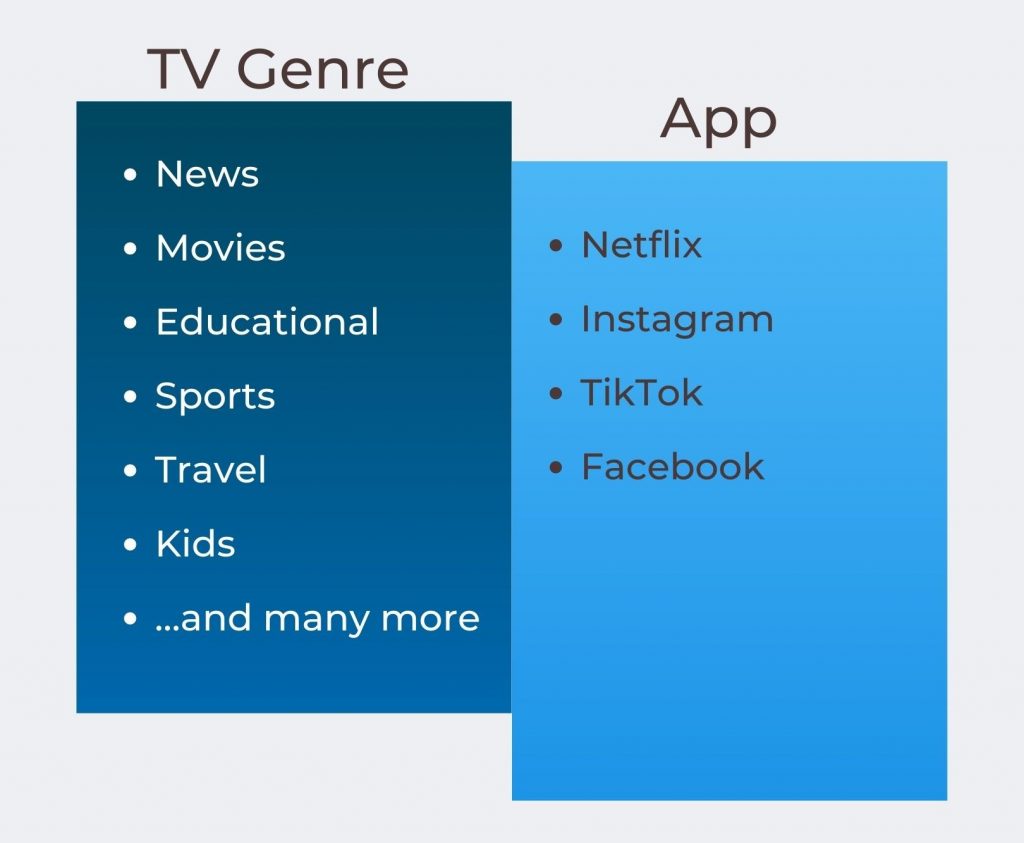
Find out more about our audience targeting solutions here.
2. Define your goals
Once you have the audience data you need, define the ultimate result that you want to see from your CTV campaign, whether it’s reach, engagement, or conversion. Create advertisements that resonate well with your target audiences and prompt them to take action towards the goal. You can also define different goals for each ad that you make. Set a regular period of time (e.g. monthly or quarterly) to measure your campaign performance against the goals.
3. Repurpose your existing video ads or create new ones
If you already have video assets, you can repurpose them as connected TV advertisements. If you don’t, take note of these video specifications to produce high-quality CTV ads:
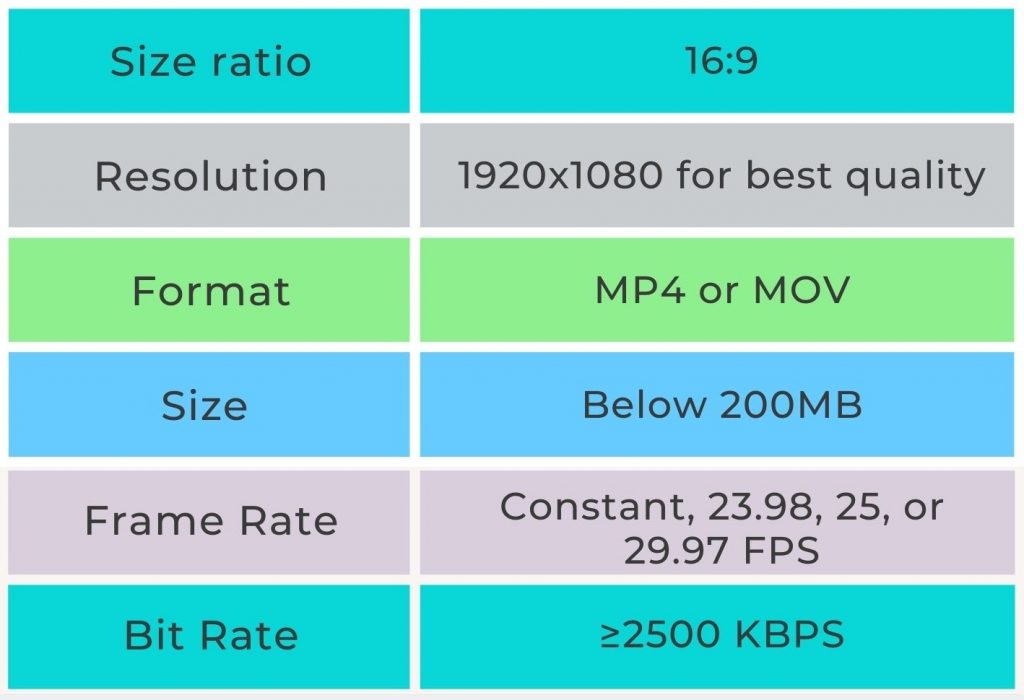
Apart from the technicalities, always create the video ads with your target audience persona in mind. Think about:
- • what colors, sounds, and images your target audience likes
- • what their biggest problem or desire is
- • how your product can help solve that problem or fulfill the desire
- • which call to action can prompt them to buy your product or interact with your brand
4. Create short but effective ads
Another aspect to consider is the duration of your ads. Each CTV ad only runs for 15 to 30 seconds during commercial breaks. Keep your ad around 15 seconds, since longer ads are more expensive to create and run and aren’t effective in retaining viewers’ attention. Try to get your main message across in the first few seconds to pique the viewers’ interest before they get a chance to skip the ad or turn off the TV.
5. Take note of best practices for CTV ads
CTV ads are different from social media or linear TV ads. Audiences engage with CTV ads on a large screen in the living room with friends or family. To capture their attention and propel action, below are some best practices to keep in mind:
- • Add a visual or audio call to action at the end of the ad. Keep the CTA short and simple. Ask the viewers to do only one action–whether it’s to go to your website, check out your product, or visit your store.
- • Display your logo persistently throughout the ad so your viewers can recognize you.
- • Engage your audience with sounds — jingles, slogans, or catchy choruses. Audio is the first thing that attracts the attention of viewers and influences whether they will continue watching the ad or not.
6. Set budgets
There are two kinds of budget to set for CTV advertising–one for your creatives and one for the actual campaign. Set a budget for your creatives that is sufficient enough to create high quality ads but also moderate enough so it wouldn’t cut into your ROI.
On the other hand, your monthly budget for your CTV ad campaign will vary depending on how many viewers you want to reach. The higher the reach, the more expensive it will be. Make sure that the budget you set can reach enough people to generate better returns.
7. Track your CTV campaign
After you’ve launched your connected TV ad campaign, establish metrics that you want to measure on a regular basis. Some examples of CTV ad metrics include:
- • Ad impressions
- • Click-through rate
- • Site visits
- • Cost per visit
- • Cost per completed view
- • Conversion rates
- • Ad completion rates
Read also: Understanding and Combating Ad Fraud in CTV Advertising
8. Devise an omnichannel marketing strategy
Your CTV ad campaign alone may not be enough to reach your marketing goals if you have multiple products and multiple target audiences. For a higher reach, engagement or conversion rates, it’s crucial to have an omnichannel marketing strategy with ad campaigns on different landscapes–social media, Google, or even linear TV. You can adjust the format of one advertisement to be compatible across different platforms and devices, such as mobile phones, tablets, and TVs.
Listen to: APAC Spotlight: CTV Growth Markets and Strategies for APAC Advertisers | Podcast #2
Conclusion
As with any kind of marketing campaign, you need careful thought and planning to take advantage of the ample benefits that the CTV space has to offer. In this article, we gave you a complete guide to run connected TV advertising campaigns that are sure to reach your marketing goals and amplify return on ad spend.
Book a data strategy session with AlikeAudience and take the first step towards your CTV advertising journey.

